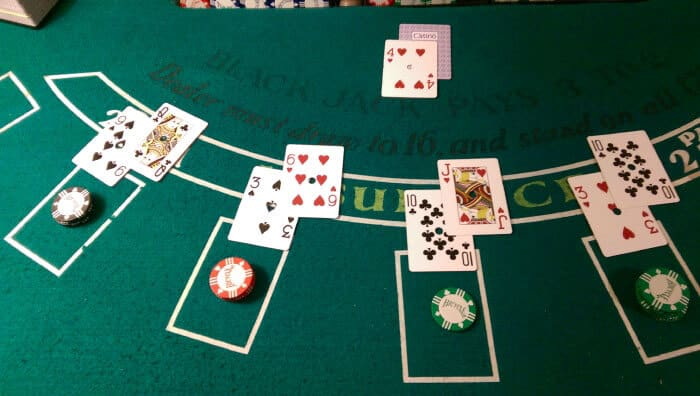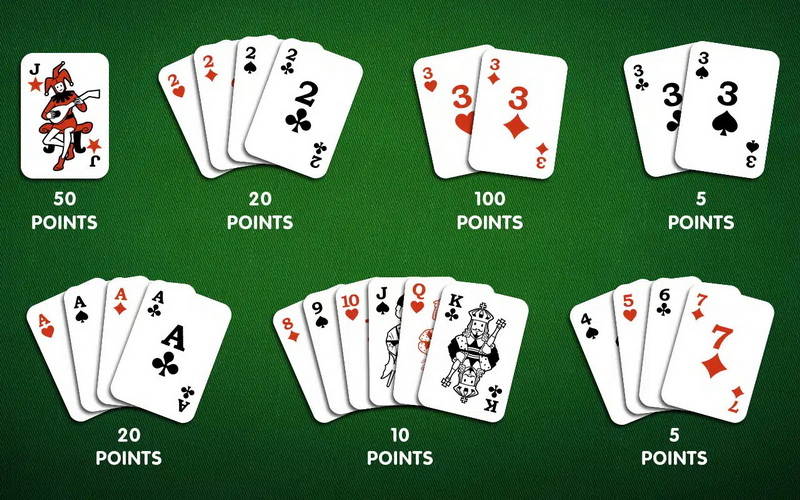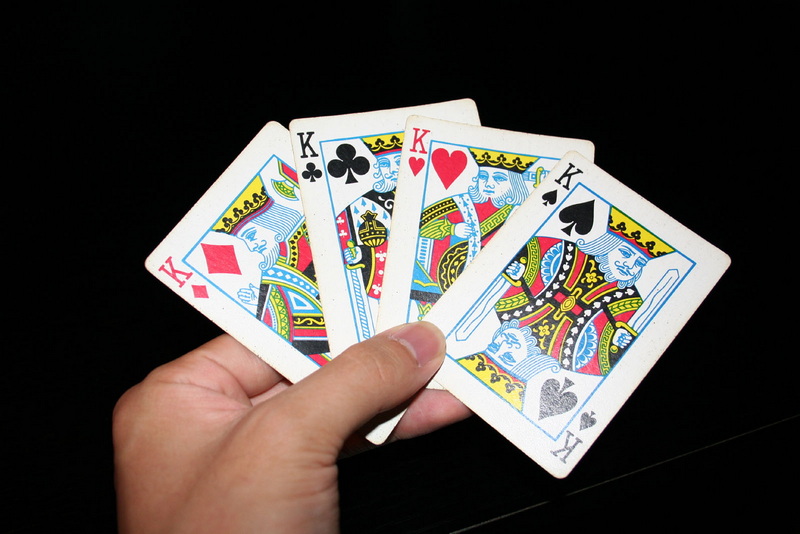Content Menu
● Overview of the Game
● Game Setup
● Bidding Rules
● Gameplay Mechanics
● Scoring System
● Strategies for Success
● Endgame Scenarios
>> Advanced Strategies
>> Variations of Forty-One
>> Social Aspects
● Conclusion
● Frequently Asked Questions
>> 1. What is the minimum number of players required for playing Forty-One?
>> 2. How are points calculated in Forty-One?
>> 3. Can I play alone against multiple opponents?
>> 4. What happens if no one meets their bids?
>> 5. Is there any specific strategy for bidding?
● Citations:
The 41 card game, commonly known as "Forty-One" or "Empat Satu," is a popular card game played in various cultures, particularly in Syria and Indonesia. This article will provide a comprehensive guide on how to play the game, including its rules, strategies, and scoring methods. By the end of this article, players will be well-equipped to enjoy this engaging card game with friends and family.

Overview of the Game
Objective: The primary goal of the 41 card game is to be the first player or team to reach 41 points. The game can be played by 2 to 4 players and involves strategic thinking and teamwork.
Number of Players: The game is typically played with four players divided into two teams. However, it can also accommodate two to four players in total.
Materials Needed: A standard 52-card deck is required for playing the game. Players may also need a scorekeeping method, such as paper and pencil.
Game Setup
1. Form Teams: If playing with four players, divide into two teams. Partners should sit opposite each other at the table.
2. Determine the Dealer: To decide who deals first, players can draw cards from the deck; the player with the lowest card becomes the dealer.
3. Deal Cards: Each player is dealt 13 cards in a clockwise manner. The remaining cards form a draw pile.
4. Bidding Phase: After dealing, players enter the bidding phase where they declare how many tricks they believe they can win during the round. Players must bid at least one trick, and the total of all bids must equal 11 or more; otherwise, cards are reshuffled and dealt again.
Bidding Rules
- Each player states their bid in turn, starting from the player to the left of the dealer.
- Bids can range from 1 to 6 tricks for single bids or from 7 to 13 for double bids (where points are doubled).
- If the total bids are less than 11, all players must return their hands and re-deal.
Gameplay Mechanics
1. Starting Play: The player to the left of the dealer leads the first trick by playing any card from their hand.
2. Following Suit: Players must follow suit if possible. If a player cannot follow suit, they may play any card from their hand.
3. Winning Tricks: The highest card of the led suit wins the trick unless a trump card (hearts) is played, which will win unless outdone by a higher trump card.
4. Continuing Play: The winner of each trick leads the next trick until all 13 tricks have been played.
Scoring System
Scoring occurs at the end of each round based on how many tricks players win relative to their bids:
- Players earn points equal to their bid if they take at least that many tricks.
- For bids of 1-6 tricks: Points equal to the number of tricks taken.
- For bids of 7-13 tricks: Points are doubled (e.g., if you bid 8 and take at least 8 tricks, you score 16 points).
- If a player fails to meet their bid, they lose points equal to their bid value.
- A team wins when one player reaches or exceeds 41 points while their partner has a positive score.

Strategies for Success
To excel in playing 41, consider these strategies:
- Card Counting: Keep track of which cards have been played to better gauge what your opponents might hold. This helps in making informed decisions about your plays and bids.
- Bidding Wisely: Be realistic about your hand strength when bidding; overestimating can lead to significant point losses. Assess your cards carefully before making a bid that could put you at risk.
- Communication with Partner: Use subtle signals or strategies with your partner to coordinate play without revealing too much information to opponents. This could involve specific plays that indicate certain strengths or weaknesses in your hands.
- Managing Trump Cards: Since hearts are always trump cards, use them strategically to win crucial tricks when necessary. Playing them at critical moments can shift the game in your favor significantly.
- Defensive Play: If your partner is struggling with their bid, consider playing defensively by not leading strong cards that could help opponents win tricks. Instead, focus on protecting your team's score by minimizing opponents' gains.
Endgame Scenarios
The game continues until one player reaches at least 41 points while ensuring their partner has a positive score. If both teams reach this threshold simultaneously, compare scores between partners; the team with the higher score wins.
Advanced Strategies
As players become more familiar with the basic rules and strategies of Forty-One, they may want to delve into advanced tactics that can elevate their gameplay:
- Reading Opponents: Pay attention to how opponents react during bidding and play phases. Their confidence or hesitation can provide clues about their hand strength and strategy.
- Adjusting Bids Based on Position: Being aware of your position relative to other players can influence your bidding strategy. For example, if you are last in bidding and observe high bids from others, you might want to lower your expectations unless you have an exceptionally strong hand.
- Endgame Focus: As you approach higher scores near 41 points, shift your focus towards not just winning tricks but also preventing opponents from gaining points that could lead them closer to victory.
- Psychological Play: Sometimes bluffing about your hand strength during bidding can throw off opponents' strategies. However, this should be used sparingly as it can backfire if not executed carefully.
Variations of Forty-One
While Forty-One has its core rules, many regions have developed unique variations that add different twists:
1. Different Scoring Systems: Some versions may have alternative scoring methods where certain cards carry additional point values or penalties for specific combinations.
2. Wild Cards: Introducing wild cards into play can change strategies significantly as players adapt to unexpected elements within their hands.
3. Team Dynamics: In some variations, teams may be allowed more communication or signaling methods during play phases that alter traditional gameplay dynamics.
4. Card Exchanges: Some house rules allow players to exchange cards with teammates after bidding but before play begins—a strategy that can strengthen partnerships significantly.
5. Time Limits on Bidding/Play: To increase competitiveness and reduce downtime between plays, some groups may impose time limits on how long each player has for bidding or playing their cards during rounds.
Social Aspects
Playing Forty-One is not just about competition; it's also a social experience that fosters camaraderie among players:
- Building Relationships: As players engage in friendly competition over several rounds, they often build stronger relationships through shared experiences and teamwork dynamics.
- Cultural Exchange: In regions where Forty-One is popular, playing this game often serves as an opportunity for cultural exchange among diverse groups who enjoy sharing traditions through gameplay.
- Family Bonding: Many families adopt Forty-One as a staple game during gatherings or holidays due to its engaging nature and ability to accommodate various skill levels among participants.
Conclusion
Playing the 41 card game can be an enjoyable experience that combines strategy, teamwork, and competitive spirit. As players become familiar with its rules and mechanics, they can develop their skills and enjoy countless hours of fun with friends and family. Whether you are new to card games or an experienced player looking for something fresh, giving 41 a try is sure to be rewarding!

Frequently Asked Questions
1. What is the minimum number of players required for playing Forty-One?
The minimum number of players required is two; however, it is most commonly played with four players divided into two teams.
2. How are points calculated in Forty-One?
Points are calculated based on how many tricks a player wins compared to their bid. Winning at least as many tricks as bid earns points equal to that bid; failing results in losing points equal to the bid value.
3. Can I play alone against multiple opponents?
Yes, you can play alone against multiple opponents (up to three), but it may be more challenging without partners for support during bidding and gameplay strategies.
4. What happens if no one meets their bids?
If no player's total bids reach at least 11 tricks combined, all players must return their hands, reshuffle, and deal again.
5. Is there any specific strategy for bidding?
Yes! Bidding should reflect your hand's strength realistically; overbidding can lead to significant point losses if you fail to meet your declared tricks.
Citations:
[1] https://gamerules.com/rules/forty-one/
[2] https://www.pagat.com/draw/41.html
[3] https://casinowithbonus.com/games/rules/empat-satu-41/
[4] https://boardgames.stackexchange.com/questions/23868/is-there-an-english-name-for-this-popular-lebanese-card-game
[5] https://www.youtube.com/watch?v=2SVcWtfKSIs
[6] https://gamerules.com/rules/empat-satu-41/
[7] https://www.pagat.com/auctionwhist/41.html
[8] https://www.youtube.com/watch?v=2SVcWtfKSIs
[9] https://blog.jawaker.com/en/tarneeb-syrian41-rules-en/
[10] http://asikabis.com/jbga/fortyone/houserule.html
[11] https://www.reddit.com/r/lrcast/comments/2p7vow/41_card_deck/
[12] https://www.vaia.com/en-us/textbooks/math/college-algebra-6-edition/chapter-8/problem-41-you-are-dealt-one-card-from-a-52-card-deck-find-t/
[13] https://images-cdn.fantasyflightgames.com/filer_public/4b/03/4b032c44-5d3c-4436-bda6-c160e4319b91/ahc_faq_v21-compressed.pdf
[14] https://www.wopc.co.uk/members/ken-lodge/guide-to-dating-playing-cards
































